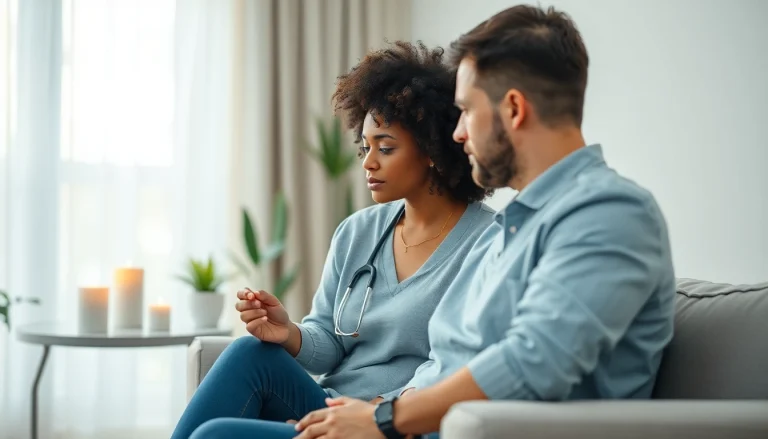
Understanding Anxiety Disorders
Anxiety is a common emotional response experienced by individuals facing stress or uncertainty in their lives. However, when this anxiety becomes persistent and overwhelming, it may indicate an anxiety disorder. Understanding the nature of anxiety, its various forms, and its symptoms is the first step towards effective management. An estimated 40 million adults in the United States are affected by anxiety disorders, making it the most common mental illness in the country. In this comprehensive guide, we will delve into various aspects of dealing with anxiety, providing practical strategies that can lead to significant personal improvement.
What is Anxiety?
Anxiety is a normal reaction to stress and can be beneficial in some situations. It prompts us to pay attention, focus, and prepare for expected challenges. However, anxiety can become disproportionate to the actual threat, resulting in constant worry, fear of impending doom, and physical symptoms like increased heart rate, sweating, and fatigue. According to the American Psychological Association, anxiety disorders can disrupt daily life, making it challenging to engage in social and professional activities.
Types of Anxiety Disorders
Anxiety disorders encompass several specific conditions, each with its unique features:
- Generalized Anxiety Disorder (GAD): Characterized by excessive, uncontrollable worries about various aspects of life.
- Panic Disorder: Involves recurrent panic attacks and intense fear that culminates in physical symptoms such as heart palpitations and difficulty breathing.
- Social Anxiety Disorder: A persistent fear of social situations where one may be judged or scrutinized by others.
- Specific Phobias: Involves intense, irrational fears of specific objects or situations, such as heights or public speaking.
- Obsessive-Compulsive Disorder (OCD): Characterized by unwanted, intrusive thoughts (obsessions) leading to repetitive behaviors (compulsions).
- Post-Traumatic Stress Disorder (PTSD): Develops after experiencing or witnessing a traumatic event, leading to flashbacks, nightmares, and severe anxiety.
Symptoms and Signs of Anxiety
The symptoms of anxiety disorders may vary from one individual to another and can interfere with daily activities. Some common symptoms include:
- Physical Symptoms: Increased heart rate, sweating, tremors, muscle tension, and fatigue.
- Cognitive Symptoms: Excessive worrying, difficulty concentrating, and blanking out.
- Emotional Symptoms: Irritability, restlessness, and feelings of dread or panic.
Recognizing these symptoms is crucial for individuals seeking help and for their support networks. The earlier anxiety is identified and addressed, the more effectively it can be managed.
Coping Mechanisms for Dealing with Anxiety
Coping mechanisms play an essential role in managing anxiety. These strategies can be categorized into relaxation techniques, physical activity, mindfulness, and more. Below are some practical approaches that can be employed to alleviate anxiety symptoms effectively.
Relaxation Techniques
Relaxation techniques are invaluable tools for diminishing anxiety symptoms. They can help lower heart rates, decrease muscle tension, and produce a sense of calm. Here are several effective methods:
- Deep Breathing Exercises: Practicing deep, slow breaths can activate your body’s relaxation response, counteracting stress responses.
- Progressive Muscle Relaxation: This involves tensing and then relaxing different muscle groups, which can help reduce physical symptoms of anxiety.
- Visualization Techniques: Imagining a peaceful scene or a safe place can help shift focus away from anxious thoughts.
- Yoga and Tai Chi: Both practices combine physical movement, meditation, and breathing exercises, enhancing overall well-being.
The Power of Exercise
Regular physical activity is one of the most effective ways to combat anxiety and stress. It promotes the release of endorphins, chemicals in the brain that elevate mood and induce relaxation. Engaging in rhythmic, aerobic exercises such as walking, jogging, or dancing for 15 to 30 minutes at least three times a week can significantly reduce anxiety symptoms. Exercise not only occupies your mind but also contributes to improved sleep patterns and self-esteem, creating a positive cycle of mental health improvement.
Mindfulness and Meditation Practices
Mindfulness and meditation are effective techniques for dealing with anxiety. They encourage individuals to focus on the present moment, alleviating worries about the past or future. Popular practices include:
- Mindfulness Meditation: This practice promotes awareness of thoughts and feelings without judgment, helping to reduce anxiety over time.
- Guided Imagery: Following a recorded session or live guidance to navigate calming visualizations.
- Mindful Breathing: Concentrating solely on your breath can help foster relaxation and present-moment awareness.
Professional Help and Treatment Options
When anxiety becomes overwhelming, seeking professional help is crucial. Various treatment options are available, each aiming to equip individuals with the skills to manage their anxiety effectively.
Therapy Approaches: CBT and Beyond
Cognitive Behavioral Therapy (CBT) is one of the most effective psychotherapy methods for managing anxiety disorders. CBT focuses on identifying and changing negative thought patterns, teaching individuals to challenge irrational fears and develop healthier coping mechanisms. With the guidance of a trained therapist, patients learn to confront their fears gradually through exposure therapy techniques, expanding their comfort zones and reducing anxiety over time.
Medication and Its Role
In some cases, medication may be necessary for managing anxiety symptoms. Doctors may prescribe medications such as:
- Selective Serotonin Reuptake Inhibitors (SSRIs): These medications increase serotonin levels in the brain, helping to regulate mood and anxiety.
- Benzodiazepines: These are fast-acting sedatives that can alleviate symptoms in acute situations. However, they carry a risk of dependency if used long-term.
Collaborating with a healthcare professional will help determine the best course of action tailored to individual needs, combining therapy with pharmacological support when necessary.
Support Groups and Community Resources
Connecting with others who share similar experiences can provide encouragement and diminish feelings of isolation. Support groups offer a safe space for discussing feelings, sharing coping strategies, and fostering hope. Many community organizations and healthcare facilities offer these resources. Utilizing platforms like mental health forums and support websites can also extend connection opportunities, making it easier to find relevant assistance and share experiences.
Self-Help Strategies for Immediate Relief
In addition to professional treatment, there are numerous self-help strategies individuals can implement for immediate anxiety relief. These techniques are designed to be quickly accessible, offering acute relief when anxiety feels unmanageable.
Breathing Exercises to Calm Anxiety
One of the easiest and most effective self-help methods is practicing controlled breathing exercises. For instance, the 4-7-8 Technique, where one inhales for four seconds, holds the breath for seven seconds, and then exhales for eight seconds, can be a quick way to reduce anxiety. By focusing on the breath, the mind can become calmer, allowing for clearer thought processes.
Journaling for Mental Clarity
Writing down thoughts, fears, and experiences can provide insight and clarity. Journaling serves as an excellent outlet for expressing emotions and can help identify triggers of anxiety. Regularly documenting feelings can also highlight patterns, making it easier to manage reactions and frustrations over time.
Creating a Fear Ladder
A “fear ladder” is a technique commonly used in CBT to confront fears gradually. Individuals create a list of anxiety-producing situations, ranking them from least to most anxiety-inducing. This ladder allows individuals to gradually face their fears in a controlled manner, providing an opportunity for desensitization and a sense of accomplishment as they progress.
Building Long-term Resilience Against Anxiety
Long-term resilience against anxiety involves consistent efforts and lifestyle adjustments. Developing resilience is a continual process of learning and self-growth, contributing to a sustained sense of peace and confidence.
Maintaining Healthy Lifestyle Habits
Incorporating healthy habits into daily life can drastically improve mental health. A balanced diet rich in nutrients, regular physical activity, adequate sleep, and hydration plays a vital role in maintaining emotional balance. Furthermore, reducing or eliminating alcohol and caffeine, which can exacerbate anxiety symptoms, is crucial for managing mental health effectively.
Setting Realistic Goals for Anxiety Management
Establishing achievable goals is critical in the journey of managing anxiety. Goals should be specific, measurable, attainable, relevant, and time-bound (SMART). Small, incremental achievements build confidence and create a positive feedback loop that encourages further progress. Regularly evaluating these goals can help adapt and refine approaches to anxiety management as circumstances change.
Developing a Strong Support System
A solid support network is invaluable for anyone dealing with anxiety. Seeking help from compassionate friends, family members, or professionals reinforces feelings of safety and understanding. Sharing experiences with trusted individuals can lighten the emotional load associated with anxiety, encouraging open discussions and mutual support. Additionally, engaging with community resources or online groups can foster a sense of belonging and connection.




